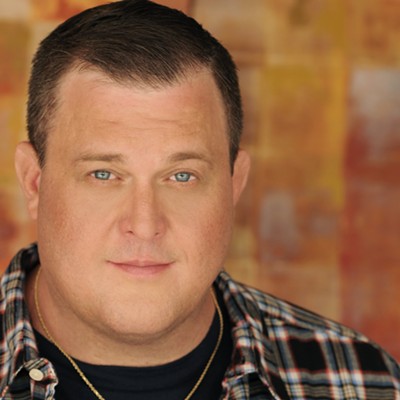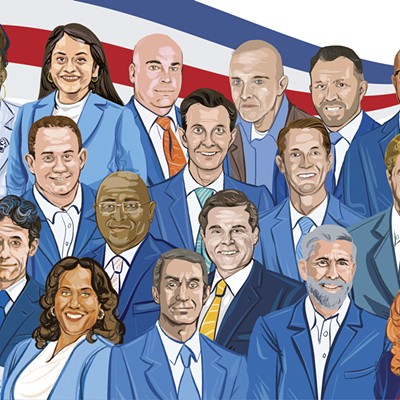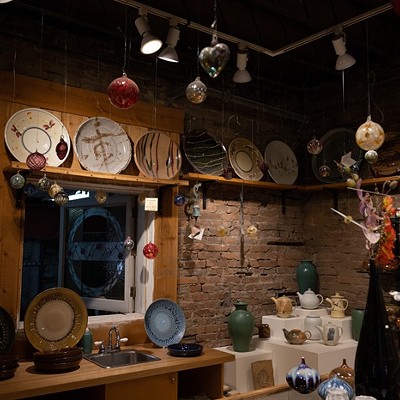Sunday, January 24, 2010
There Is No End To More
Jeremy Wade's There Is No End To More begins with a bravura bit of seeming nonsense. It's a movement piece: performer Jared Gradinger, occupying an essentially bare stage last night at the New Hazlett Theater, danced to a voiceover narration that seemed collaged from scraps of a half-dozen or more of the futuristic candy-coated superhero fantasies familiar from Japanese cartoons.
The narration was a stream-of-consciousness tumble of polyethylene surrealism and cut-and-paste pseudonarrative. "I'm covered in rain and electrical bolts of energy," said the voice -- unsettlingly, an adult male voice adopting the whispery hush of a child telling a story under the bedsheets.. "My horse can suddenly talk to me. ... I'm falling through the folds in space. I have a magic ring."
Gradinger sometimes quivered, sometimes creeped; mimicked flight (on his belly, back arched, arms thrust forward); postured defiantly. Danger threatened. A team of heroes was vaguely formed. Rainbows figured prominently.
This prologue was followed by sort of a nightmare version of a children's TV show titled There Is No End To More. Gradinger, a dark-haired, dark-bearded young guy in large round spectacles, played the host. The "show" was composed largely of Gradinger attempting to educate an unseen group of children about a series of issues: "puberty class," "diversity," "government." But the kids (voiced with breathless precision by Gradinger himself) took over the discussion with their non sequiturs, questions, factoids and half-formed impressions. The "family" discussion is transformed when one kid asks, "What if your mom used to be a boy?"
With an increasingly cacophonous soundtrack and a mad mix of video projections on the set's back wall -- Flash-style animations of cats, black-and-white cartoons suggesting anime -- the show's host is quickly overwhelmed by the show.
There Is No End, part of The Andy Warhol Museum's typically provocative Off the Wall performance series, is a collaboration between numerous artists. Wade, who directed, conceived the work while on a commission in Japan to research the phenomenon of Kawaii (or "cute") culture. With cartoons from Japan; current events from the U.S.; and magazine images from Europe, however, There Is No End's dark take addresses any consumer society.
A series of brief, interpolated lectures on the perils of consumerism (delivered by a deep, distorted male voice accompanying magazine furniture ads) helps make clear that the general idea of There Is No End is to critique our culture of sensory overload and its buy-happiness ethos.
Wade and company also seemed to say that in an increasingly complex and ubiquitously commercialized world, kids grow up confused, and that commercial interests exploit these anxieties in selfp-perpetuating ways. A longing for inclusion in one of those TV-perfect families, for example, can be fulfilled only through equally merchandized fantasies of TV-perfect superhero teams.
Near the show's end, the consumerism lecturer described a black lacquered end table pictured in an IKEA-like ad as the embodiment of malevolence, even as the onscreen table grew a black hole that sucked in several cartoon characters. The sequence, willfully hyperbolic, baffled me. Then I realized that Wade and company were proposing that as adults, we merely subsume the childhood anxieties we escaped through fantasy into the purchase of household furnishings.
The full house at the New Hazlett might have been a bit shell-shocked by the show's sound and fury, but surely everyone left with plenty to talk about.
Tags: Program Notes












